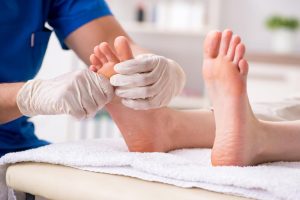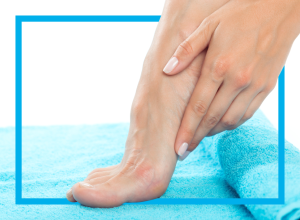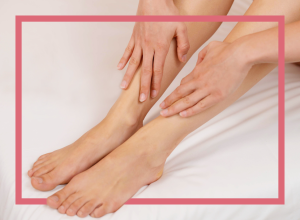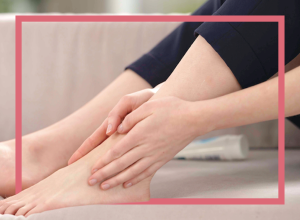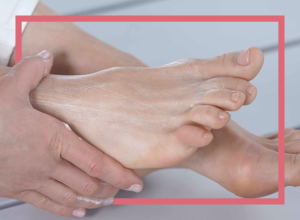Rough, cracked heels – cracks are a widespread skin problem, especially in the warmer months. They usually appear where the skin is particularly stressed: on the feet. The cracks not only look unattractive, but can also be uncomfortable and even cause pain. In this article, you will find out how cracks develop, what everyday tips can help – and what really matters when it comes to daily foot care.
What are fissures anyway?
Cracks, also known as rhagades in technical jargon, are tears in the top layer of skin. They often occur in areas that are exposed to particularly high stress or friction – such as the heels. In the initial stage, fine, dry cracks usually appear, which can deepen over time. Depending on the severity, the fissure may extend into the deeper layers of the skin. This can be very uncomfortable in everyday life: Cracks can be tight, burn or even cause stabbing pain when they appear.
It typically occurs in conjunction with very calloused or very dry skin. Elasticity is lost, the skin becomes brittle – and even the slightest movement can cause it to tear open in certain areas. If they remain unnoticed, the cracks can deepen further and there is a risk of germs penetrating. You should therefore provide care and protection at an early stage.
Why do fissures occur?
The main cause of chapped skin is dry skin. When the skin’s natural protective film becomes unbalanced, it loses moisture and elasticity. If the skin is also subjected to a lot of stress – for example by standing for long periods or wearing tight shoes – it is particularly susceptible to cracking. But there are also other factors that can play a role:
- Callus formation: If the cornea becomes too thick, it loses flexibility. It tears more easily – especially under heavy strain.
- Overweight: More body weight means more pressure on the heels – this encourages the formation of cracks.
- Footwear: Open or ill-fitting shoes encourage the heel skin to dry out and increase friction.
- Foot misalignments: Incorrect loading can lead to uneven pressure distribution – often with consequences for the skin.
- Skin diseases: People with neurodermatitis, psoriasis or diabetes are more likely to suffer from dry skin – and therefore also from chapped skin.
- External influences: Cold, dry heated air or standing for long periods on hard floors also have a negative effect on skin health.
It is often a combination of several causes that lead to the skin losing its elasticity and cracking.
Preventing chapped feet: tips for troubled feet
Cracks can often be avoided with consistent care. It is crucial to keep the skin on the feet supple and to counteract excessive callus formation in good time:
- Gentle cleansing: Wash your feet daily with lukewarm water and a skin-friendly cleansing product. Make sure you dry the skin well afterwards – especially between the toes.
- Apply cream regularly: Dry skin needs moisture and care. A nourishing foot cream, ideally with natural active ingredients, helps the skin to remain soft and elastic.
- Gentle callus removal: Thick calluses are less flexible and tear more quickly. Remove them regularly with a pumice stone or a special file – preferably after showering when the skin is softer.
- Suitable footwear: Well-fitting, breathable shoes take the strain off your feet. Make sure there is enough space in the heel area and avoid rigid or abrasive materials.
- Drink plenty: The skin also benefits from adequate hydration. If you drink too little, you risk dry, rough skin.
- Wear natural materials: socks made of cotton or wool are breathable and help to balance out moisture.
Care for existing cracks
If fissures are already present, it is important to provide the skin with targeted support. The aim is to protect the affected areas of skin, promote natural regeneration and prevent further cracks. A proven aid here is the Spirularin® SR Cracked Skin Cream. The foot care cream was specially developed for particularly stressed, cracked skin areas such as heels. At its heart is the natural microalgae active ingredient Spiralin®, which supports the skin on several levels:
- Supports skin regeneration: The cream promotes the regeneration of chapped, cracked skin and helps to stabilize the skin structure.
- Protection against microbial influences: The active ingredient contained in the product covers the skin like a protective film – without being greasy – and can naturally make it more difficult for unwanted germs to penetrate.
- Moisturizing boost: The unique complex of plant-based hyaluronic acid, obtained from the snow fungus, and 20% urea binds moisture in the skin in a highly effective way. This helps to alleviate feelings of tightness.
- Nourishing ingredients: shea butter and safflower oil keep the skin soft and supple, while linseed oil and witch hazel provide lasting support for cell regeneration.
With its pleasant texture, the cream is quickly absorbed and is therefore ideal for daily use, for example before going to bed or after showering. For best results, it is advisable to apply Spirularin® SR Cracked Skin Cream regularly to the affected areas of skin – ideally in combination with gentle foot care.
Conclusion
Cracks can be painful and impair the skin’s natural protective function. This makes it all the more important to pay regular attention to your feet. Preventing dry skin, using gentle care and high-quality products with natural active ingredients helps the skin to remain elastic and resistant. This significantly reduces the risk of painful cracks and fissures.
Experten-Tipp entstand in Zusammenarbeit mit:
Patrick Günther
Patrick Günther completed his pharmacy studies in Hamburg and, after obtaining his licence to practise, worked for several years in marketing and sales in the pharmaceutical industry. In 2003, he took over ocean pharma, the company founded by his father in Reinbek near Hamburg in 1978. Together with his business partner, he patented the important processing and standardisation process for the microalgae active ingredient Spiralin® and developed a wide range of medical cosmetics and foot care products based on Spiralin®.


